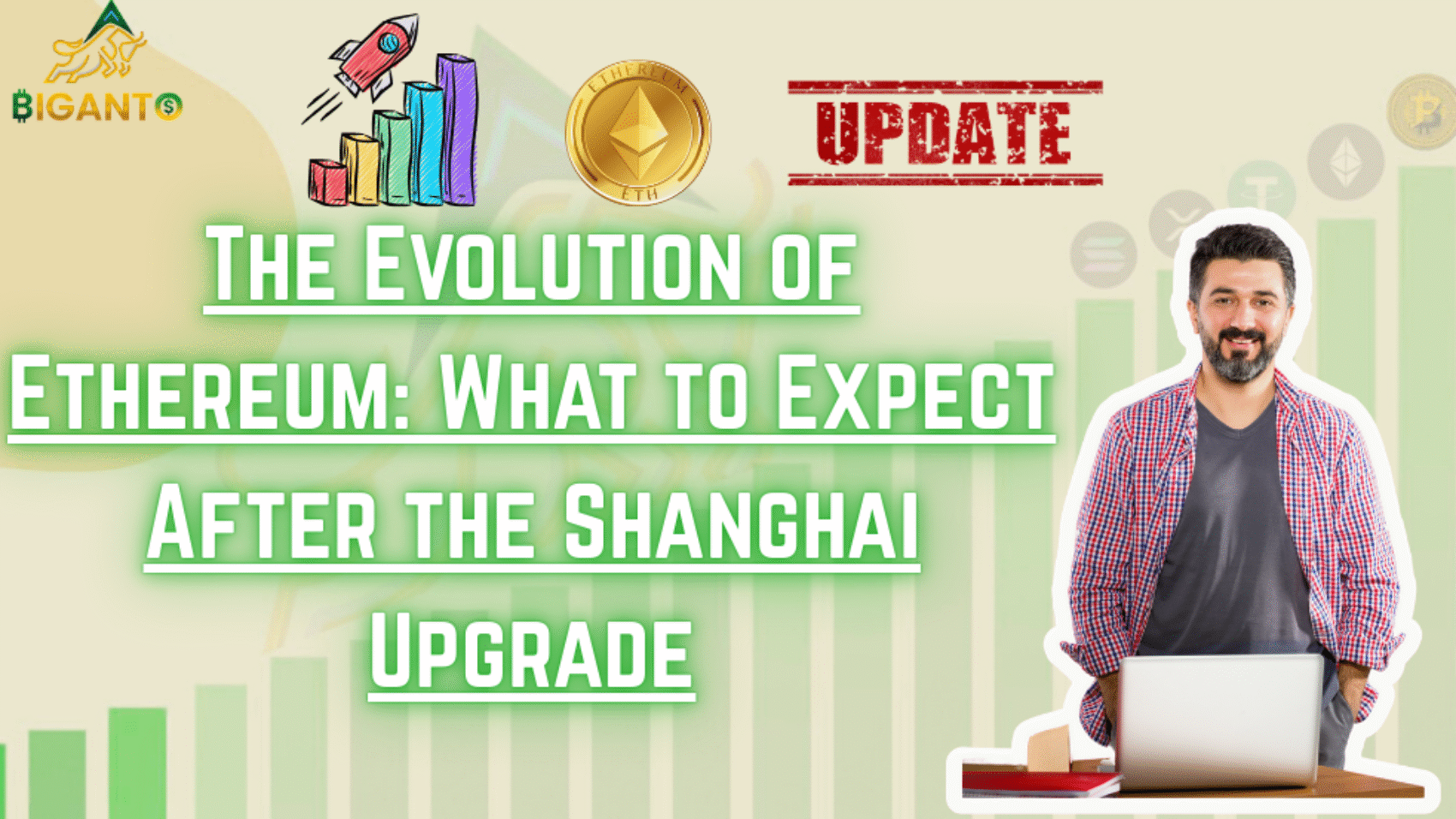Ethereum Enters a New Era
After years of anticipation and technical development, Ethereum took a major leap forward with the Shanghai Upgrade in March 2023. This wasn’t just another routine update—it was the moment when Ethereum’s transition to proof-of-stake truly came full circle. Until then, users who had staked their ETH were helping to secure the network but couldn’t access their locked funds. The Shanghai Upgrade finally changed that, introducing long-awaited staking withdrawals and opening the door to a more flexible, liquid, and user-friendly staking experience. But Shanghai didn’t stop there—it also delivered deeper changes to Ethereum’s virtual machine, setting the stage for the next generation of decentralized innovation.
Ethereum Shanghai Upgrade (Shapella):
The Ethereum Shanghai Upgrade, also known as Shapella (a mix of “Shanghai” and “Capella”), went live on April 12, 2023, and it was one of Ethereum’s most important updates. Why? Because it finally allowed people to withdraw their staked ETH—something they couldn’t do before.
What Did the Shanghai Upgrade Do?
Unlocking Staked ETH: EIP-4895
The Shanghai Upgrade implemented something called EIP-4895 (Ethereum Improvement Proposal 4895), which finally allowed withdrawals of staked ETH.
The upgrade implemented Ethereum Improvement Proposal 4895 (EIP-4895), which allowed users to withdraw their staked ETH and accrued rewards. This change was a game-changer, offering flexibility for validators who had committed their funds for years. It also made Ethereum’s staking ecosystem more attractive to new participants. By the time of the upgrade, nearly 18 million ETH—around 11% of the total circulating supply—were staked by over 560,000 validators, up from 14 million at the time of The Merge.
To ensure network stability and avoid mass exits, Ethereum developers imposed a daily withdrawal cap of 43,200 ETH. This smart control mechanism helped prevent a sudden flood of ETH exiting the staking pool, maintaining the health of the network.
Additional Features: EVM Enhancements
Beyond staking withdrawals, the Shanghai Upgrade also included multiple technical improvements to Ethereum’s core structure—specifically, updates to the Ethereum Virtual Machine (EVM). These updates, grouped under the EVM Object Format (EOF) proposals, aimed to streamline and future-proof smart contract development. The EVM, which powers all Ethereum-based dApps and contracts, has over 120 opcodes. These upgrades enhanced its efficiency and improved compatibility across EVM-based blockchains, making the ecosystem more developer-friendly and robust.
Reducing Gas Costs – Why It Matters
On Ethereum, every transaction or smart contract action requires gas fees. For developers and block builders, these costs can add up fast.
The Shanghai Upgrade introduced improvements to the Ethereum Virtual Machine (EVM) to make operations more efficient and cheaper. This helps developers build dApps at lower cost and allows block builders to include more transactions without wasting resources.
Why Was the Shanghai Upgrade So Important?
1. Final Step in Ethereum’s PoS Journey
The Shanghai Upgrade was the last major milestone in Ethereum’s shift to Proof-of-Stake (PoS). Before this, staking ETH meant locking it up without knowing when you’d get it back. That made the system feel incomplete and risky. With Shanghai, validators could finally withdraw their ETH, making the staking process complete and fully functional.
2. More Liquidity, More Confidence
By allowing withdrawals, the upgrade unlocked millions of ETH that had been stuck since staking began. This added much-needed liquidity to the market and, more importantly, gave users confidence. People now felt safer staking their ETH, knowing they could unstake and access their funds anytime. This helped attract more participants and made the Ethereum network stronger and more decentralized.
3. New Market Dynamics
There were concerns that the unlocked ETH would lead to a big sell-off, crashing prices. But Ethereum’s developers built a smart withdrawal system with daily limits and queues, so ETH was released gradually. The market handled it well. Instead of panic selling, staking actually became more appealing because of its new flexibility.
4. A Stronger Economic Model
With the ability to withdraw anytime, staking became a less risky and more investor-friendly option. This made Ethereum’s economic system more mature and sustainable, encouraging long-term participation and helping build a healthier blockchain ecosystem.
What to Expect After the Shanghai Upgrade
Increased Scalability: Ethereum will be able to handle millions of transactions per second (TPS), enabling a vast array of new applications and use cases beyond its current capabilities.
Faster Transactions: Single-slot finality will revolutionize the user experience by providing near-instant transaction confirmations.
Enhanced User Experience: Account abstraction, along with ongoing wallet improvements, will make interacting with Ethereum more intuitive, secure, and akin to using traditional web applications. This is crucial for mainstream adoption.
Stronger Decentralization: Anyone Can Run a Node
With the introduction of Verkle Trees and stateless clients, Ethereum will dramatically reduce the hardware and storage requirements for running a node.
Today, only well-equipped machines can run full nodes. In the future, even a smartphone or low-end laptop could join the network.
Increased Security & Fairness: A More Trustworthy Network Ethereum is tackling MEV (Maximal Extractable Value) and potential censorship risks head-on. Innovations like Proposer-Builder Separation (PBS) aim to split block production responsibilities and limit MEV abuse.

